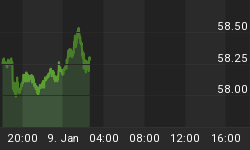Today's chart show's one of the most important aspects of the stock market right now.
I have spoken on this topic before, but allow me to go a little more in depth at this time. The topic and issue is about the amounts and levels of "Inflowing Liquidity" or how those with the cash can be in control.
You have all heard the old saying that "cash is king" ...
There was a very good reason for this saying ... From one perspective, it refers to the value of holding cash and waiting for an opportunity that has a large return-leverage.
For example ... On occasion, some really good "below market value" deals appear due to the stress an original owner is under. On these occasions, the original owner often tries to liquidate something of value at a "bargain basement price" in an effort to generate cash quickly. It is at times like this, that Warren Buffett often comes in and picks up a good future bargain.
If cash is king, then one could say that the amount of Inflowing or Outflowing Liquidity is a reflection of the use of that cash. The value of knowing the trend and relative amount of Liquidity in the stock market is one of the most important aspects of the stock market today.
Let's take this one step further ... For the sake of simplicity, let us say that Liquidity can be in a state of Expansion or Contraction. "How it gets there" is through trending action where a series of successes or failures establish an up or down trend.
*** An up trend of Inflowing Liquidity, that takes it to high Expansion territory tells you something. It tells you that some source has repeated injected large amounts of money in successful attempts to get something at a bargain price or drive prices higher. When this is occurring, the market moves higher no matter what your indicators, or negative divergences might be telling you ... because "cash is king" and negative divergences never kick in until after Inflowing Liquidity recedes and starts to down trend. Until then, negative divergences will just grow larger and confuse you.
At the other end of the spectrum, a down trend of Inflowing Liquidity, that takes Liquidity to low Contraction territory that tells you something as well. It tells you that some source has repeatedly removed large amounts of money in successful attempts in order to save profits or mitigate perceived or real risks.
The point is that investors like Jesse Livermore were right: "The stock market works on a simple principle ... when money flows IN, the market goes UP. When money flows OUT, the market goes DOWN."
This is why keeping a daily track and accounting of Inflowing Liquidity is so important. The market today is about what is happening to the levels and trending of Inflowing Liquidity. It is also the reason why so many investors have been confused by today's market.
Today will be "free member courtesy day". That means we share one of the charts that we post every day on our www.StockTiming.com Standard Subscriber Site. The chart we have chosen today is obviously ... one about Inflowing Liquidity levels and its trending.
I won't offer a big explanation, because this is one of those charts that you either get or you don't. Basically, this chart show's the trending and relative amounts of Inflowing Liquidity in the stock market relative the NYA (New York Stock Exchange) Index.
On the chart, you can see how Inflowing Liquidity was up trending and starting to enter Liquidity Expansion territory in June to August of 2012. It has remained in Liquidity Expansion territory since hat time, is has been in the upper Quadrant of Liquidity Expansion during all of 2013 so far. What should you make of this? One answer could be: If cash is king, follow the king.
That is today's update ... have a great weekend.

















